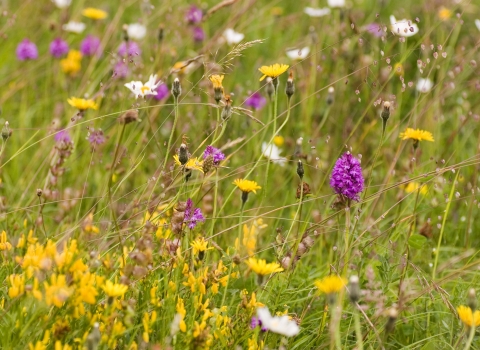If you have been to Monkwood recently, we'd really appreciate it if you could complete our short survey about your visit. Thank you.
Thank you for keeping your dogs on a lead and sticking to paths at all times.
Monkwood by Ben Rees
Know before you go
Dogs
When to visit
Opening times
Dawn to duskBest time to visit
All year roundAbout the reserve
It’s likely that Monkwood, owned for centuries by Worcester Priory, has been in existence for over 1000 years. “Monckewood” is first recorded in 1240, although woodland in the old manor of Grimley is mentioned as far back as 961. A plan from 1746 shows the boundaries of the wood almost exactly as they are today. Records from the 17th century show that the wood was being managed partly as coppice and partly as high forest. This combination of tall, mature trees and ones that have been cut to near ground level to encourage new growth probably continued until the early 20th century.
Monkwood was purchased by LG Harris & Company in the 1950s to produce timber for brush handles. Large areas were clear-felled and replanted with a mixture of native and non-native trees. Despite this, the wood retained much of its ancient character and wildlife interest. The methods they used almost re-created traditional coppiced conditions and certain woodland wildlife thrived.
The wood had always been known for its butterflies and when LG Harris came to sell the wood in the 1980s, Worcestershire Wildlife Trust was assisted in its purchase by Butterfly Conservation. The two organisations have worked together to improve the habitat, gradually reduce the number of non-native trees and have a long term plan to work on towards the restoration of the woodland to its former glory.
The wood is varied with a mixture of mature trees, stands of different ages, coppiced areas and sunny glades and rides. The open sunny conditions allow for blooms of woodland flowers – including bluebells and wood anemones – and the insects they attract. As the shrubs and coppiced trees re-grow they are colonised by a variety of birds, especially warblers. Old and decaying trees are retained throughout the woodland to benefit hole-nesting birds, fungi and invertebrates that depend on them. 36 species of butterfly have been recorded here including white admiral and purple hairstreak.
Small pools attract dragonflies and are home to a variety of freshwater life. The woodland is part of a national dormouse monitoring programme and nest boxes and tubes have been placed throughout the wood to help monitor their population. Forestry work usually takes place in Monkwood during the winter months.
Our work is designed to improve the woodland for wildlife and the felled timber helps create income for our conservation work across the county. All Trust woodlands are certified with the UK Woodland Assurance Scheme for their high standards of management.
In 2022, the Trust bought 23 hectares of adjacent land at Green Farm. This land consists of eight meadows, some of which are species-rich, bounded by mature diverse hedgerows. Our plans include recreating historic habitats, such as orchards and wood pasture, as well as restoring several of the meadows to their former glory. Green Farm offers a wonderful opportunity to connect Monkwood to other sites of high value for wildlife in the area. To help with this, and to help combat the effects of climate change, we will be encouraging natural regeneration of native woodland and will be seeking to plant additional species that have other benefits, such as berry-rich rowans or drought-resistant hornbeams. As part of the initial project we will be working with local communities and schools, improving parking and upgrading our nature trail for visitors to enjoy. You can find out more about our work in our Monkwood Musings blog.
The purchase of Green Farm was made possible in the first instance by the Esmée Fairbairn Foundation, who initially bought the land to give the Trust time to raise funds. The Trust would like to thank members, the public, National Lottery players via the National Lottery Heritage Fund, Severn Waste Services, The Banister Charitable Trust, 3dtotal.com Ltd and The LG Harris Charitable Trust, without whose generous donations we would not have been able to save the land and undertake our ambitious vision to recreate a historic and connected landscape.



